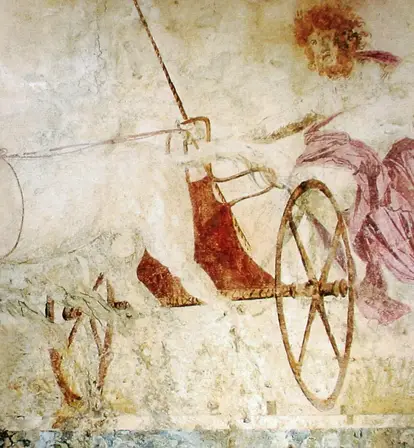In Greek mythology, the goddess Demeter was so distraught about the abduction of her daughter Persephone by Hades, the king of the Underworld, that she refused to perform her duties while Persephone wasn't by her side, causing the Earth to grow barren in the winter.
In Greek mythology, everything from thunderstorms and earthquakes to the rising and setting of the Sun can be explained by the behaviors of the gods. And the arrival of springtime, as well as the barrenness of the Earth come winter, is explained by the story of Hades and Persephone.
Sometimes, the myth is told as a love story. Other times, it’s described as the rape of a young girl and a mother’s heartbreak over the loss of her only child.
The story goes that Hades, the god of the dead, kidnapped a beautiful girl named Persephone and made her his queen. When Persephone expressed a desire to return to Mount Olympus, the gods agreed that she could spend part of the year with her mother, Demeter, and part of the year with her new husband in the Underworld. It is her annual departure that marks the beginning of winter and her return that heralds the start of spring.
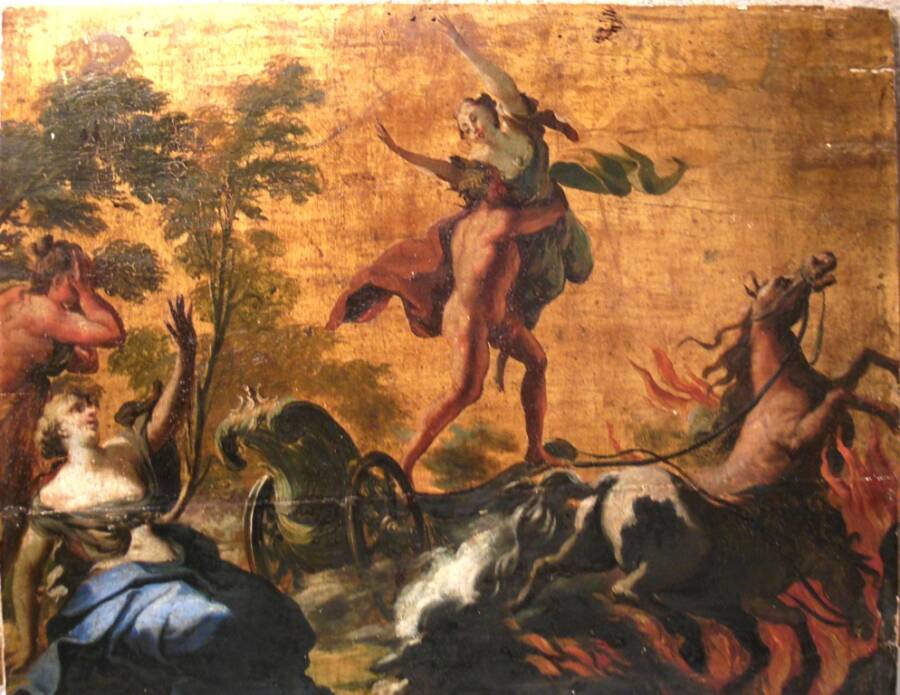
Wikimedia CommonsHades kidnapped Persephone and made her his wife, forcing her to live in the Underworld for part of the year.
It’s a story that has evolved and been reinterpreted countless times over the millennia. Some versions of the myth even depict it as an ancient love story so powerful that it can overcome death itself.
Hades, The King Of The Underworld
In Greek mythology, Hades was the god of the dead.
When brothers Zeus, Poseidon, and Hades overthrew their father, Kronos, they divided his kingdom into three dominions: the seas, the skies, and the Underworld. Hades was given control of the Underworld and the dead.
Depicted as a cold, impassive, and sometimes harsh ruler, Hades supervised the trials of souls who entered the Underworld upon death as well as the eternal punishment of evil. Because he had dominion over the Earth and, consequently, all of the gems, metals, crops, and other riches that came from it, he was considered immensely wealthy.
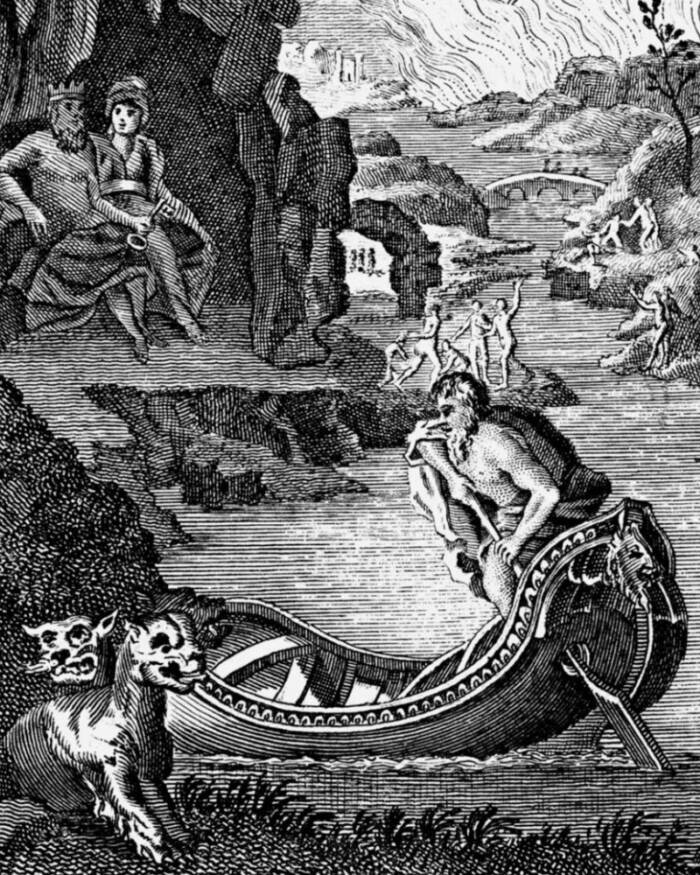
Public DomainAn 18th-century depiction of Hades’ Underworld.
Hades almost never left the Underworld. Instead, mortals faced him only when they ended up there themselves, contributing to Hades’ air of mystery. But in rare cases, the god of the dead did emerge from his underground home. And the most notable of these occasions was the abduction of Persephone.
The Fateful Meeting Of Hades And Persephone
Persephone was the daughter of Zeus, the king of Olympus, and Demeter, the goddess of the harvest. Much of what we know about her today comes from Homer’s “Hymn to Demeter,” a 495-line poem dating to the early 6th century B.C.E. The mother and daughter had a particularly strong bond, so much so that they’re often referred to as “The Two Goddesses.”
According to the poem, young Persephone was out in a meadow with other girls gathering flowers when she was abducted by Hades. As she bent down to pick up an enticing narcissus, the ground suddenly opened up beneath her, and Hades emerged in a horse-drawn chariot.
And the earth, full of roads leading every which way, opened up under her.
It happened on the Plain of Nysa. There it was that the Lord who receives many guests made his lunge.
He was riding on a chariot drawn by immortal horses. The son of Kronos. The one known by many names.
He seized her against her will, put her on his golden chariot,
And drove away as she wept.
Persephone let out a cry, but Hades snatched her up and took her to the Underworld. There, he raped her and made her his wife. The ancient Greeks would have understood this to mean that Persephone had died.
To make the story even more disturbing, the entire plot was conceived by Persephone’s father, Zeus, who had agreed to give Persephone to his brother Hades as his wife.
The Agreement That Created The Seasons
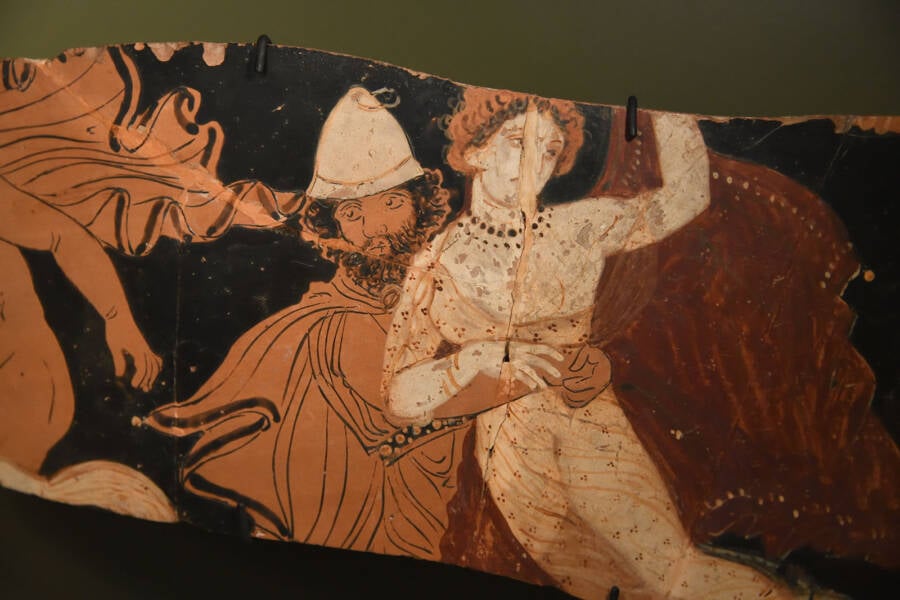
Wikimedia CommonsA piece of Italian pottery dating between 350 and 325 B.C.E. that depicts Hades’ abduction of Persephone.
Up on Mount Olympus, Demeter heard her daughter’s screams and began desperately searching the entire world for her. Unable to find her, the goddess of the harvest was so despondent that she neglected her duties, and not a single thing grew on the Earth during the time.
“She said that she would never go to fragrant Olympus, that she would never send up the harvest of the earth, until she saw with her own eyes her daughter, the one with the beautiful looks,” Homer wrote.
Zeus eventually noticed that the Earth was barren and that people were suffering from the prolonged famine. To protect humanity, Zeus decided to send the messenger god, Hermes, to retrieve his daughter from Hades and bring her back into the light of day. Hermes found Persephone “under duress, yearning for her mother, and suffering from the unbearable things inflicted on her by the will of the blessed one.”
Hades consented to allow his wife to leave. But before she did, Hades tricked Persephone into eating seeds from a pomegranate that grew in the Underworld. Because she ate the fruit, she became bound to Hades and the land of the dead and could not fully rejoin her mother in the world of the living.
So, the gods agreed that Persephone would spend two-thirds of the year with her mother. The other third of the year, she would live with Hades, ruling alongside him as Queen of the Underworld. Other versions of the myth say Persephone spent half of the year in the land of the living and half in the Underworld.
Whenever she descends back into the Underworld, Demeter again falls into despair, causing the harvest to die. And Persephone’s return to the land of the living marks the arrival of spring, when crops and flowers finally grow again.

Frederic Leighton/Wikimedia CommonsThe Return of Persephone, a painting depicting Persephone’s reunion with her mother Demeter on Earth.
Interpretations Of The Myth Of Hades And Persephone
While Persephone was taken into the Underworld against her will, it is said that over time, she came to love Hades in return. As his queen, she ruled the Underworld alongside him as his equal.
This story not only offers an explanation of the seasons but also creates a new mythology around the relationship between life and death. Persephone is the queen of the dead, but she’s also the being that ushers in new life on Earth come springtime. As explained by classics professor Chris Mackie in The Conversation, “There is life in death, and death in life.”
The myth also marks a shift in the understanding of death. With such a benevolent and beautiful presence as Persephone ruling the Underworld at Hades’ side, death suddenly seems less terrifying than it might have had it just been Hades in control of humans’ final fate. Indeed, subsequent stories of the couple suggest Persephone had a softening power over the god of the dead.
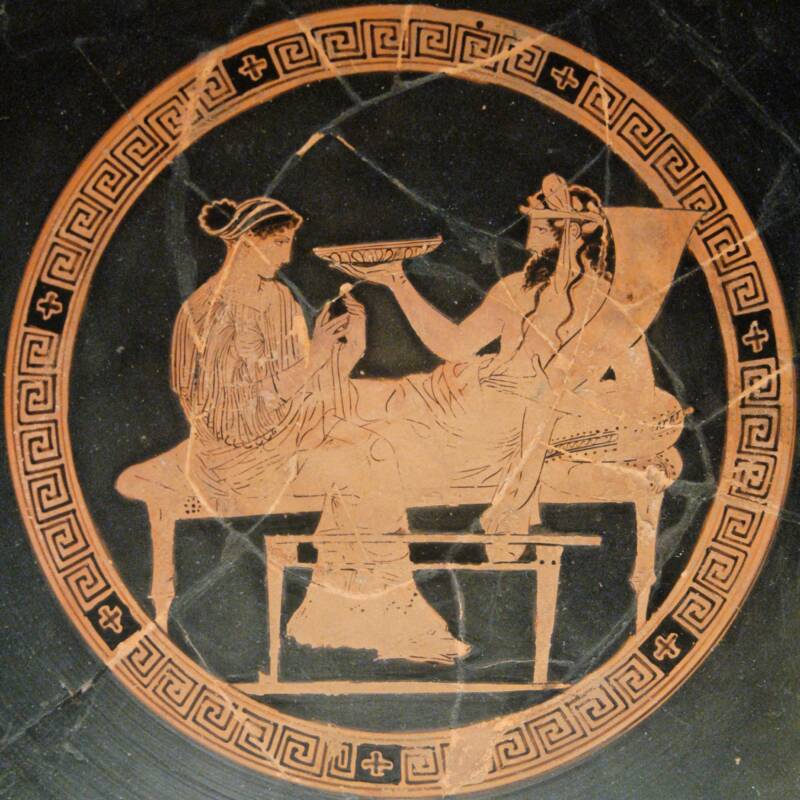
Wikimedia CommonsAn ancient Greek vase depicting Hades and Persephone.
The Tale Of Orpheus And Eurydice
In multiple myths, various Greek heroes tried to cheat death. Hades generally responded with terrible rage, refusing to allow anyone to leave the Underworld once they’d died. In a few instances, however, Persephone persuaded her husband to show these mortals mercy.
The most notable of these is the story of Orpheus and Eurydice. Orpheus, the son of Apollo and the muse Calliope, was a singer and lyre player, blessed by the gods with the gift of music. He met a beautiful woman named Eurydice, and they fell in love. But on the day of their wedding, Eurydice was bitten by a venomous snake and died.
Orpheus was devastated by this loss, and he decided to descend into the Underworld to retrieve Eurydice, refusing to accept that she was gone. He entered the Underworld, using his magic to charm Cerberus, the three-headed dog guarding its entrance, and even the Furies.
As told in Ovid’s Metamorphoses, Orpheus reached Hades and Persephone and sang them a beautiful song, begging them to let Eurydice go in the name of the same love that bound the king and queen:
“My wife is the cause of my journey. A viper, she trod on, diffused its venom into her body, and robbed her of her best years. I longed to be able to accept it, and I do not say I have not tried: Love won. He is a god well known in the world above, though I do not know if that is so here: though I imagine him to be here, as well, and if the story of that rape in ancient times is not a lie, you also were wedded by Amor. I beg you, by these fearful places, by this immense abyss, and the silence of your vast realms, reverse Eurydice’s swift death.”
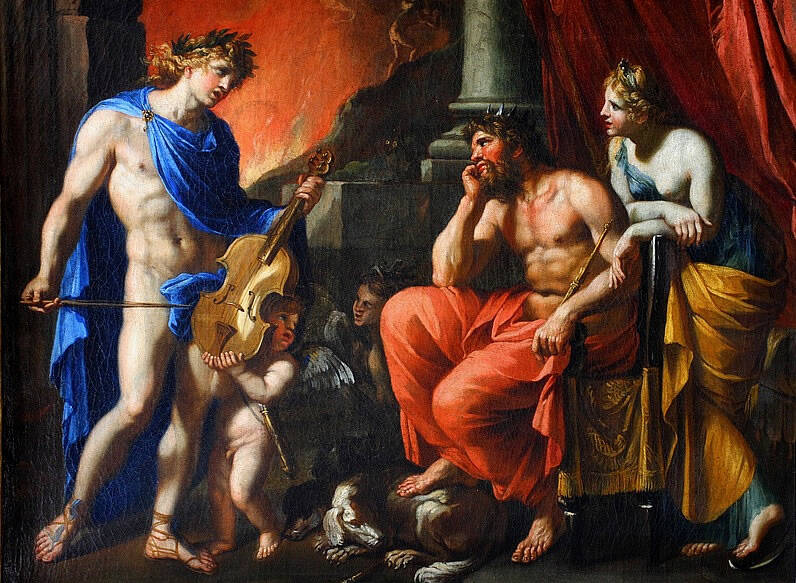
Wikimedia CommonsA 17th-century François Perrier painting of Orpheus playing for Hades and Persephone.
Hades and Persephone were so moved that they decided to release Eurydice on the condition that she walk behind Orpheus throughout their entire journey back out of the Underworld. Orpheus had to trust that she was behind him; if he looked back before they reached the surface, he would lose her forever.
In some versions, it was Persephone who persuaded Hades to let Eurydice go. In any case, it was implied that in addition to Orpheus’ beautiful song, it was Hades’ love for his wife that led him to make this concession.
Regardless of whether the story of Hades and Persephone is recounted as a love story or a chilling tale of rape and abduction, it has captivated audiences for more than 3,000 years — and it continues to spawn retellings to this day.
After learning the myth of Hades and Persephone, read about Anubis, the ancient Egyptian deity of death and the Underworld. Then, go inside the debate over whether or not the Trojan Horse was real.
